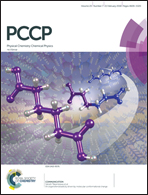Oxidation behaviour of U3Si2: an experimental and first principles investigation
Abstract
Uranium-containing metallic systems such as U3Si2 are potential Accident Tolerant Fuels (ATFs) for Light Water Reactors (LWRs) and the next generation of nuclear reactors. Their oxidation behaviour, especially in oxygen and water-enriched environments, plays a critical role in determining their applicability in commercial reactors. In this work, we have investigated the oxidation behaviour of U3Si2 experimentally and by theoretical computation. The appearance of oxide signatures has been established from X-ray diffraction (XRD) and Raman spectroscopic techniques after oxidation of the solid U3Si2 sample in synthetic air (oxygen and nitrogen). We have also studied the changes in the electronic structure as well as the energetics of oxygen interactions on the U3Si2 surfaces using first principles calculations in the Density Functional Theory (DFT) formalism. The detailed charge transfer and bond length analyses revealed the preferential formation of mixed oxides of UO2 and SiO2 on the U3Si2{001} surface as well as UO2 alone on the U3Si2{110} and {111} surfaces. The formation of the peroxo (O22−) state confirmed the dissociation of molecular oxygen before U3Si2 oxidation. Core experimental analyses of the oxidized U3Si2 samples have revealed the formation of higher oxides from Raman spectroscopy and XRD techniques. This work is introduced to further a better understanding of the oxidation of U–Si metallic fuel compounds.



 Please wait while we load your content...
Please wait while we load your content...